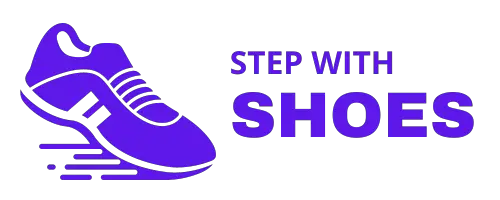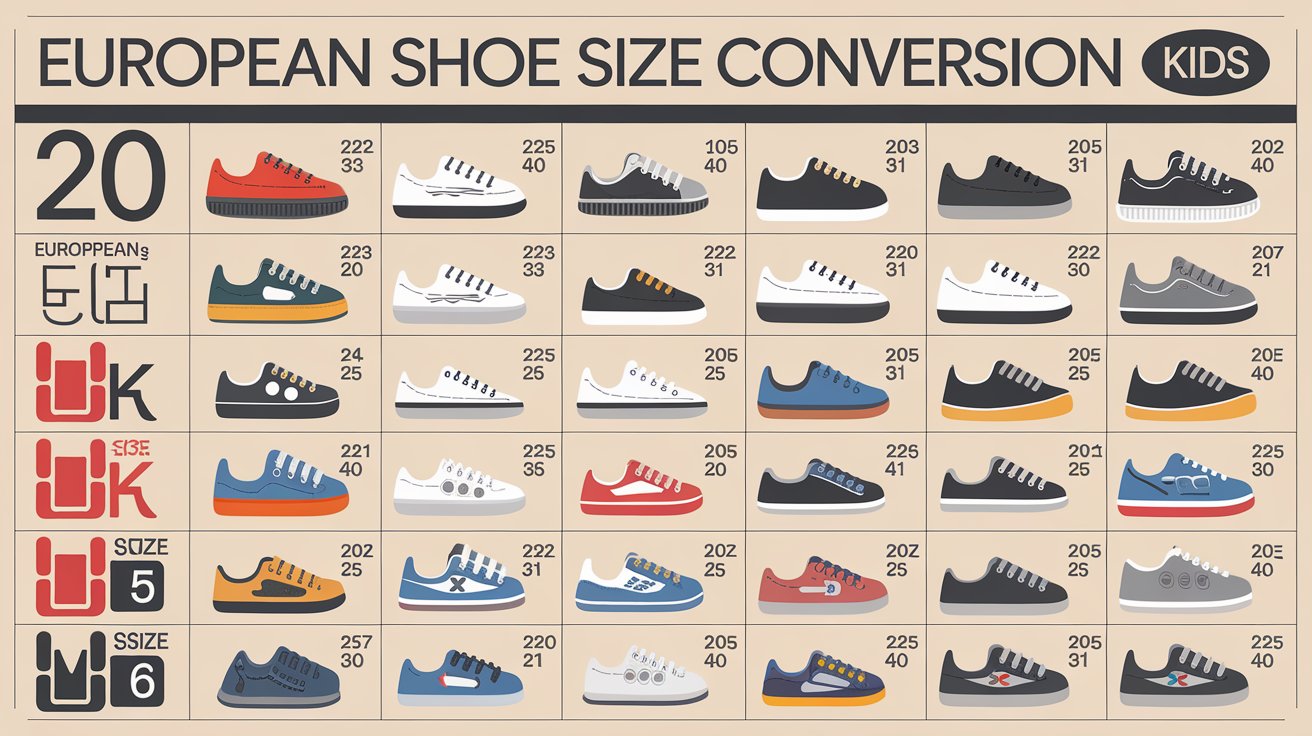Accurately fitting children’s shoes is crucial for healthy foot development, especially given how quickly kids’ feet grow. One of the biggest challenges parents face is navigating European (EU) shoe size conversions alongside US and UK measurements. Below, you’ll find age-specific conversion tables—from infants to big kids—along with foot length guidelines to help you select the perfect size for every stage of childhood.
Why European Shoe Sizes Are Tricky
European (EU) kids’ sizes use a numerical scale (often 16–35 for children) without half sizes. In contrast, US and UK systems use half sizes for some ranges and can split categories into “infants,” “toddlers,” “little kids,” and “big kids.” Each brand may also have slight variations, so accurate foot measurement remains essential.
How to Measure Your Child’s Foot
- Prepare Materials
- A sheet of paper
- A pencil
- A ruler or measuring tape
- Trace & Measure
- Place the paper on a hard floor.
- Have your child stand flat-footed with full weight on the paper.
- Trace around the foot, keeping the pencil upright.
- Measure from the heel to the tip of the longest toe.
- Measure Both Feet
- One foot can be larger than the other.
- Always use the larger measurement when selecting shoe sizes.
- Match with EU Sizes
- Use the foot-length column in each table to find the best-fitting EU size.
- Cross-reference the US or UK columns if needed.
Infants’ Shoe Size Conversion (0–9 Months)
Infant shoes (sometimes labeled as “crib shoes” or “pre-walkers”) are more about keeping tiny feet warm and protected. Here’s a quick reference chart:
| EU Size | Approx. Foot Length (cm) | US Size | UK Size | Approx. Age |
|---|---|---|---|---|
| 16 | 9.4 – 9.6 | 1 – 1.5 (Infant) | 0 – 0.5 (Infant) | 0 – 3 months |
| 17 | 9.7 – 10.0 | 2 – 2.5 (Infant) | 1 – 1.5 (Infant) | 3 – 6 months |
| 18 | 10.1 – 10.5 | 3 – 3.5 (Infant) | 2 – 2.5 (Infant) | 6 – 9 months |
Tip: Infants grow rapidly; check their shoe size often to ensure a proper (not overly tight) fit.
Toddlers’ Shoe Size Conversion (9 Months–4 Years)
Toddlers need shoes that provide balance and support as they learn to walk, run, and explore. EU sizes in this range typically run from 19 to about 26.
| EU Size | Approx. Foot Length (cm) | US Size | UK Size | Approx. Age |
|---|---|---|---|---|
| 19 | 10.6 – 11.0 | 4 – 4.5 | 3 – 3.5 | 9 – 12 months |
| 20 | 11.1 – 11.5 | 5 – 5.5 | 4 – 4.5 | 1 – 1.5 years |
| 21 | 11.6 – 12.0 | 5.5 – 6 | 4.5 – 5 | 1.5 – 2 years |
| 22 | 12.1 – 12.5 | 6.5 – 7 | 5.5 – 6 | 2 – 2.5 years |
| 23 | 12.6 – 13.0 | 7.5 – 8 | 6.5 – 7 | 2.5 – 3 years |
| 24 | 13.1 – 13.5 | 8 – 8.5 | 7.5 – 8 | 3 – 3.5 years |
| 25 | 13.6 – 14.0 | 9 – 9.5 | 8.5 – 9 | 3.5 – 4 years |
| 26 | 14.1 – 14.5 | 9.5 – 10 | 8.5 – 9 | Up to ~4 years |
Note: Ages are approximate. Always go by your child’s measured foot length rather than age alone.
Little Kids’ Shoe Size Conversion (4–7 Years)
Little kids typically wear shoe sizes that bridge toddler and youth ranges. EU sizes here generally span from 27 to around 31.
| EU Size | Approx. Foot Length (cm) | US Size | UK Size | Approx. Age |
|---|---|---|---|---|
| 27 | 14.6 – 15.0 | 10.5 – 11 | 9.5 – 10 | 4 – 5 years |
| 28 | 15.1 – 15.5 | 11 – 11.5 | 10 – 10.5 | 5 – 5.5 years |
| 29 | 15.6 – 16.0 | 12 – 12.5 | 11 – 11.5 | 5.5 – 6 years |
| 30 | 16.1 – 16.5 | 12.5 – 13 | 11.5 – 12 | 6 – 6.5 years |
| 31 | 16.6 – 17.0 | 13.5 – 1 (Youth) | 12.5 – 13 | 6.5 – 7 years |
Big Kids’ Shoe Size Conversion (7–12 Years)
Big kids, often considered school-age or youth sizes, can range widely in foot size. EU sizes in this bracket may run from approximately 32 to 38+.
| EU Size | Approx. Foot Length (cm) | US Size (Youth) | UK Size | Approx. Age |
|---|---|---|---|---|
| 32 | 17.1 – 17.5 | 1 – 1.5 | 13 – 13.5 | 7 – 8 years |
| 33 | 17.6 – 18.0 | 2 – 2.5 | 1 – 1.5 | 8 – 9 years |
| 34 | 18.1 – 18.5 | 3 – 3.5 | 2 – 2.5 | 9 – 10 years |
| 35 | 18.6 – 19.0 | 4 – 4.5 | 2.5 – 3 | 10 – 11 years |
| 36 | 19.1 – 19.5 | 5 – 5.5 | 3.5 – 4 | 11 – 12 years |
| 37 | 19.6 – 20.0 | 6 – 6.5 | 4.5 – 5 | 12+ years |
| 38 | 20.1 – 20.5 | 7 – 7.5 | 5.5 – 6 | 12+ years |
Tip: By the time they reach size 38 or higher (EU), kids may transition into smaller adult shoe sizes. Always confirm the fit.
Helpful Tips for a Proper Fit
- Measure Frequently
Children’s feet can grow half a size every few months. Re-check often. - Consider Socks
If your child wears thicker socks, factor that into the measurement to avoid tightness. - Check Toe Room
Leave about a thumb’s width between the longest toe and the shoe’s front to prevent cramped toes. - Observe Walking
Let your child walk or run around in new shoes. Watch for any slipping at the heel or pinching around the toes. - Check Brand-Specific Guides
Each manufacturer can have slight variations, so when in doubt, refer to the specific brand’s sizing chart.
Common Mistakes to Avoid
- Basing Size on Age Alone: Each child grows at their own pace; always rely on exact measurements.
- Purchasing Shoes Too Big: While buying bigger shoes might seem cost-effective, excessively large shoes can lead to foot strain or tripping hazards.
- Forgetting Width and Arch Support: Children’s foot widths and arches vary. Some brands offer wide or narrow fits.
Final Thoughts
Navigating European shoe size conversions for kids becomes much easier when broken down by age group and foot length. Always remember that these age ranges are approximate—your child’s actual shoe size depends on their unique foot growth pattern. By measuring regularly and consulting brand-specific size charts, you’ll ensure a comfortable fit that supports your child’s active lifestyle.
With the right measurement technique and these conversion tables, you’re well on your way to finding perfectly fitting shoes for infants, toddlers, little kids, and big kids alike!



Leave a Reply